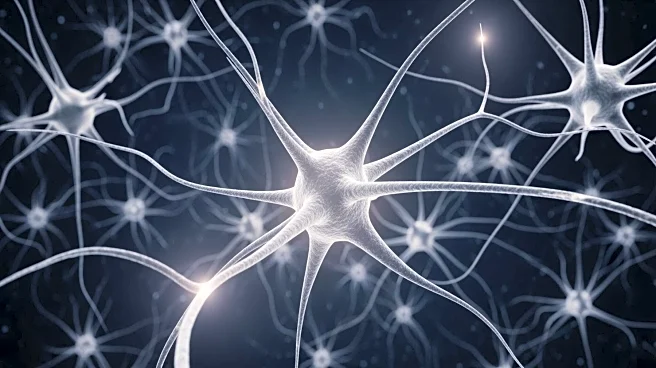What's Happening?
A recent study has investigated the reliability of various EEG measures, including functional connectivity (FC), complexity, and maximum spanning tree (MST) characteristics, across different states and time
points. The research focused on both sensor-level data and source-reconstructed data, examining the consistency of these measures in resting-state and semi-resting-state conditions. The study found moderate to good reliability for FC and complexity measures, particularly in the theta and alpha frequency bands, while MST measures showed lower reliability. The findings suggest that certain EEG measures, such as phase entropy (PE), exhibit high stability across different conditions, making them potential biomarkers for neural activity. The study also compared the reliability of pure resting-state data with semi-resting-state data, indicating that some measures can substitute semi-resting-state data without significant loss of reliability.
Why It's Important?
The study's findings have significant implications for the use of EEG measures in clinical and research settings. Reliable EEG measures are crucial for developing biomarkers that can aid in diagnosing and monitoring neurological conditions. The high reliability of PE in theta and alpha bands suggests its potential as a stable biomarker, which could enhance the accuracy of neural assessments. Additionally, the ability to substitute semi-resting-state data for pure resting-state data could streamline EEG recording protocols, reducing the need for separate resting-state sessions and potentially lowering costs and time requirements in clinical studies. However, the low reliability of MST measures indicates caution in their use as disease markers, highlighting the need for further research to improve their consistency.
What's Next?
Future research may focus on improving the reliability of MST measures and exploring alternative source reconstruction methods to enhance EEG measure consistency. Studies could also investigate the applicability of these findings to clinical populations, as the current study was conducted on a healthy, young, predominantly male cohort. Understanding the influence of age, sex, and illness on EEG measure reliability could broaden the applicability of these measures in clinical diagnostics. Additionally, further exploration of the effects of different EEG recording conditions, such as eyes open versus eyes closed, could refine the understanding of state-dependent reliability.
Beyond the Headlines
The study highlights the importance of methodological rigor in EEG research, emphasizing the need for comprehensive frameworks that incorporate a wide array of metrics for cross-comparison. The findings also underscore the potential of machine learning approaches in identifying stable neural signatures, which could revolutionize the development of EEG-based biomarkers. Moreover, the study raises questions about the influence of physiological factors, such as eye state, on EEG measure reliability, suggesting avenues for future exploration.











